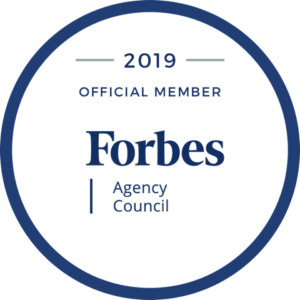
by Beth Levine | May 7, 2014
Situation: Lobbyist for prominent nonprofit. Experienced. Smart. Personable. Feeling tongue-tied and long-winded in front of groups.
Engagement Objective: To harness her experience, knowledge of issues, and noble intentions into articulate presentations of her ideas and proposals.
Coaching Relationship: It did not take long to figure out that where she got hamstrung was in her openings. Getting started was her challenge. Through my own on-site observations and with the benefit of feedback provided by her colleagues, I quickly learned that when she got off to a good start, it went well and she made her point; if she rambled or meandered from the start, it went awry and the audience was lost. This was an easy challenge to address. We worked on her openings. Openings for general updates she needed to deliver, openings for an ask she needed to make, openings for welcome or introductory remarks. We sorted the various elements that go into openings and shaped them into modular formats that she could easily picture in her mind. Then she practiced, with me and on the job. She would often come to a coaching session and relay exactly what she had done right or wrong in specific situations. I eventually got to sit back and watch her coach herself!
Result: Even when she gets called on to speak on the spot, with less than a minute to prepare, her mind goes immediately to the key elements of her opening. Have the ability to formulate strong, focused openings has not only made her presentations more impactful, but it has also bolstered her confidence.

by Beth Levine | May 7, 2014
Situation: Team of Olympic athletes. New Olympic sport. Games less than six months away. Equipment sponsor arranges for training.
Engagement Objective: To prepare these young athletes for the media attention that will come to them, especially in a brand new Olympic sport, and to help them navigate the sometimes tricky waters of mentioning and thanking their sponsors.
Training Sessions: We took an intense half-day and had a highly interactive drill down on messages and media. Each athlete worked on their own personal messaging – why they love the sport, what it means to them to go to the Olympics, how they like to express their appreciation to everyone who helped get them there. They watched clips of other athletes and learned some school-of-hard-knocks tips on what works and what doesn’t work. I had prepared worst-case-scenario and skeleton-in-the-closet questions and role-played with them on camera. As a wrap-up to the role-playing, each athlete took a turn being the interviewer, interviewee, and interview critic. Throughout all of it, they learned techniques for fielding questions and weaving in messages, including messages that acknowledged the sponsor.
Result: Less than a month later, the team attended an event in New York on behalf of the sponsor. The athletes were automatically thrust into the spotlight as spokespeople. Their messaging was fluid as they talked about the sport, their excitement, and their appreciation for the efforts and support provided by the sponsor. Gold medal performances!

by Beth Levine | May 7, 2014
Situation: Controversial mining project in rural area. Executives and members of management team are increasingly called upon to be spokespeople in public meetings, at industry events, and with media.
Engagement Objective: To give members of the executive team the skills necessary to deliver informative and influential presentations, to handle Q&A with grace and ease, and to stay calm, positive and on point at all times.
Training Sessions: The sessions were a hybrid of Media Readiness™ Training and Presentation Skills Training, delivering the best of both to these quick-study high-performers. We covered the critical “parts of a speech” – elements of a presentation that keep it on track and succinct, for both speakers and audiences. We addressed managing Q&A, both in terms of philosophy and actual tactics. And then we went on-camera to deliver presentations and to practice fielding Q&A.
Result: Executives left the training feeling prepared and confident. The CEO noticed improved performances right away. The company is seeing more positive audience reactions and balanced media coverage.






